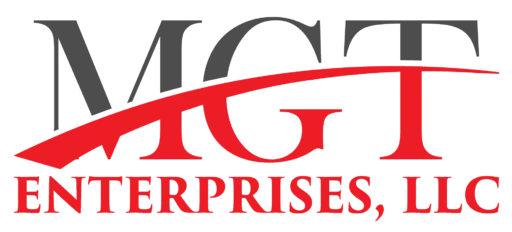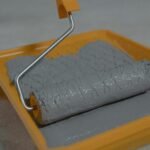Kitchens and bathrooms, of all places, are most prone to moisture that creates challenges for building materials. The ceilings are especially vulnerable to environmental agents like humidity, condensation, and water splashes. This can lead to warping in tiles, stains, and the build-up of mold. This is why moisture resistant ceiling tiles have become a go-to choice for both performance and longevity.
When equipped with sound control features, they are set to be a key component in upgrading any high-humidity area. This guide looks at how soundproof ceiling tiles, kitchens, and bathrooms, and moisture resistance work together to make things last longer, stay cleaner, and feel nicer.
Source: Alt Text; Moisture-resistant acoustic ceiling tiles installed above a commercial kitchen prep area.
Why Moisture Resistance Matters in Wet Areas?
Steam, fluctuating temperatures, and water splashes now and then are a common feature in most kitchens and bathrooms. Over time, moisture seeps into traditional ceiling tiles, which can lead to issues like
- Warping and sagging
- Mold and mildew buildup
- Stains and discoloration
- Structural degradation
Moisture resistant ceiling tiles are exceptionally good at tolerating humidity levels while incurring minimal damage. Not only does this improve indoor air quality and aesthetics, but it also reduces maintenance costs.
Excessive moisture is the culprit behind major health hazards especially mold spores, which are known triggers for asthma and allergies. In extreme cases, water-damaged tiles may end up weakening ceiling structures from within or promote breeding of pests.
The right ceiling material can tackle these issues proactively, hence avoiding costly repairs and potential health risks.
What Makes Ceiling Tiles Moisture-Resistant?
Moisture resistant tiles are engineered using specially treated cores and non-porous facings. They demonstrate the following features:
- Water-repellent surfaces that prevent absorption
- Mold- and mildew-resistant coatings
- Durable edges that resist swelling
- Sag-resistance to ensure long-term integrity
Some tiles are even designed for taking in water directly, making them ideal for placing around ceiling areas near sinks, stoves, or showers.
Acoustic Ceiling tiles wet areas Advantage in Kitchens and Bathrooms
While moisture control is the key concern, you can’t ignore acoustics. Since Kitchens and bathrooms often have hard surfaces like tile, glass, metal, they tend to reflect sound and amplify noise. Acoustic ceiling tiles are great for cutting down on:
- Echoes from things like dishes or water running.
- Noise that travels between rooms or floors.
- Bad sound in open-layout spaces.
These tiles offer a combination of moisture resistance and sound absorption- a dual package that effectively holds up against water while keeping your environment noise-free and more comfortable.
Excessive noise can become a nuisance in commercial kitchens or high-traffic public restrooms, by creating communication barriers or contributing to employee fatigue. Sound-dampening ceiling systems are designed to facilitate workflow, minimize stress, and improve the overall user experience. This is critical in settings where both efficiency and cleanliness are a priority.
Best Applications for Moisture Resistant Ceiling Tiles
Moisture resistant ceiling tiles are especially well-suited for the following environments:
- Commercial kitchens:
Kitchens are a hotbed of constant steam and smoke, with high sanitation demands
- Residential kitchens:
This applies particularly to areas adjoining cooking zones or dishwashing areas
- Public or hotel restrooms:
This is necessary to maintain proper hygiene and prevent odor retention
- Locker rooms and gyms:
These areas are known for being humid, as splashing is frequent
- Laundry rooms or basements:’
These areas are prone to leaks and condensation, which means there is a greater risk of moisture-related issues like mold growth and structural damage.
These tiles are also ideal for replacing ceilings in buildings that were dealing with water damage.
What to Consider For Installation?
If you are looking for maximum performance, it’s recommended to opt for professional installation. Here’s what you should pay attention to :
- Using grid systems compatible with moisture-resistant materials
- Seal edges to prevent moisture from intruding from above
- Reduce amount of water vapor in the surrounding air by ensuring proper ventilation
- Select tiles with a high rating for high-humidity zones or wet areas
You can take further help from moisture ratings like ASTM C635 or C423 provided by manufacturers to guide you towards the best moisture resistant ceiling tiles.
When to Replace Old Ceiling Tiles?
Look out for these signs on your kitchen or bathroom ceiling, and if you find any, consider upgrading to moisture resistant ceiling tiles:
- Visible mold or mildew
- Flaking or bubbling paint
- Sagging or cracks in tiles
- Permanent discoloration
Upgrading isn’t just about bringing cosmetic or surface-level changes. It’s more about keeping long-term water damage in check and thus making the space more usable and liveable.
Link Between Sustainability and Indoor Air Quality
Moisture-resistant tiles aren’t just supposed to be functional—many are made with an eco-friendly focus. Opt for tiles with the following sustainability features t:
- Tiles manufactured using recycled materials
- Guarantee low VOC emissions due to possessing Greenguard Gold certification. This can help you meet stringent conditions for chemical emissions.
- This may, in tur, help you gain LEED credits
Health and comfort are intricately linked to air quality, and areas like kitchens and bathrooms can make all the difference in the quality of the atmosphere you live in.
Essential Maintenance Tips for Longevity
A major perk of using moisture resistant ceiling tiles is that they are fairly easy to maintain. The following tips will do the trick:
- Wiping off with a damp cloth or mild detergent
- Periodic inspections can help detect signs of sagging or mold early on
- In case of damage, replace only the affected tile, not the entire set of tiles
- Avoid harsh chemicals as they can degrade finishes
Keeping your tiles well-maintained enables them to last for years without the usual problems like staining, warping, or harboring allergens.
Final Thoughts
Moisture-prone areas like kitchens and bathrooms call for smarter ceiling solutions. Investing in moisture resistant ceiling tiles offers a viable way to boost acoustic performance, which can greatly contribute to enhancing comfort, hygiene, and ultimately longevity.
This helps explain why these dual-function tiles are increasingly becoming the preferred choice of modern spaces, especially in commercial environments where cost reduction from downtime and repairs is a key concern.
Whether you’re thinking of remodeling or repairing, remember to factor in acoustic ceiling tiles wet areas compatibility, and sustainable options into your project plan. This strategic change will deliver benefits for times to come.






